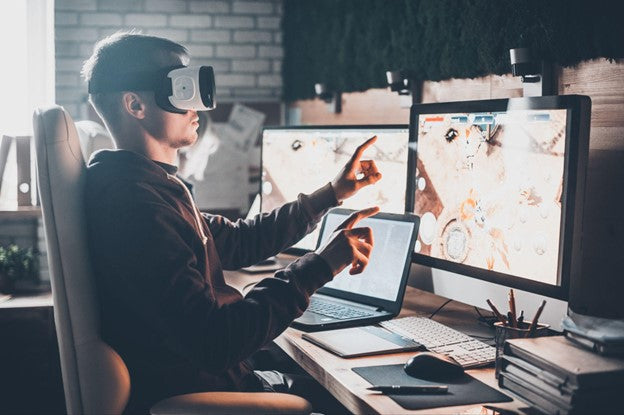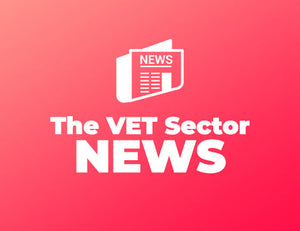
Embedding virtual reality and artificial intelligence in training and assessment
SUKH SANDHUEmbedding virtual reality and artificial intelligence in training and assessment
The vocational education sector is under pressure to provide training that is more relevant and engaging for students. Technology can play a key role in meeting these challenges, by providing immersive and realistic learning experiences that can be tailored to each individual's needs.
Virtual reality (VR) and artificial intelligence (AI) are two technologies that are being increasingly used in vocational education. VR provides an immersive environment that can simulate real-world scenarios, while AI can be used to create personalised learning experiences.
VR and AI are already being used in a variety of vocational education settings, including healthcare, construction, and hospitality. For example, VR is being used to train surgeons, while AI is being used to help hotel staff provide better customer service.
Here are some ways of embedding these technologies into vocational education and training:
- Use VR to immerse learners in realistic, simulated environments:
Virtual reality can provide learners with immersive experiences that simulate real-world settings. This can be particularly useful for vocational education students who are preparing for careers in fields such as healthcare, construction, or manufacturing. By exposure to these environments prior to entering the workforce, learners can gain a better understanding of what they can expect and how to properly respond in various scenarios.
- Use AI to create personalised learning experiences:
Artificial intelligence can be used to create learning experiences that are tailored specifically to the needs of each individual learner. This type of customisation can be beneficial for vocational education students who may have different goals or learning styles. By providing personalised learning experiences, AI can help ensure that each student is able to effectively learn the material and attain the skills they need for their desired career.
- Use VR and AI to create interactive, 3D virtual worlds:
Virtual reality and artificial intelligence can be used together to create interactive, three-dimensional virtual worlds. These worlds can be used for a variety of purposes, such as providing learners with hands-on experience in a simulated environment or allowing students to collaborate on projects with others from around the world. VR and AI-created virtual worlds have the potential to provide vocational education students with unique and valuable learning opportunities.
- Use VR to enhance problem-solving and critical thinking skills:
Virtual reality can be used to help learners develop important problem-solving and critical thinking skills. By exposing students to complex problems and scenarios, VR can challenge them to think creatively and come up with innovative solutions. These skills are essential for success in any career, but they are especially important for vocational education students who will be entering the workforce.
- Use AI to provide real-time feedback and assessment:
Artificial intelligence can be used to provide real-time feedback and assessment of learners' progress. This is valuable information for both educators and students, as it can help ensure that students are mastering the material and achieving their desired learning outcomes. Additionally, AI-based feedback and assessment can help identify areas where further instruction may be needed.
- Use VR and AI to develop collaborative learning experiences:
Virtual reality and artificial intelligence can be used together to create collaborative learning experiences. These experiences can help students learn how to work effectively with others in a virtual environment. This is an important skill for vocational education students who will be working in team-based settings in the workplace.
- Use VR to engage learners in active learning experiences:
Virtual reality can be used to engage learners in active learning experiences. By allowing students to interact with and manipulate their surroundings, VR can help them retain information and better understand complex concepts. Active learning is an effective way to teach vocational education students, as it helps them understand how they can apply what they are learning in the real world.
- Use AI to create adaptable learning experiences:
Artificial intelligence can be used to create learning experiences that are adaptable to the needs of each individual learner. This type of customisation can be beneficial for vocational education students who may have different goals or learning styles. By providing adaptable learning experiences, AI can help ensure that each student is able to effectively learn the material and attain the skills they need for their desired career.
- Use VR and AI to develop real-world simulations:
Virtual reality and artificial intelligence can be used together to create realistic simulations of real-world settings. These simulations can be used to provide learners with hands-on experience in a variety of environments, such as healthcare, construction, or manufacturing. Real-world simulations are an effective way to teach vocational education students, as they can help them understand how the material they are learning applies to real-world situations.
- Use VR and AI to create personalised learning experiences:
Virtual reality and artificial intelligence can be used together to create personalised learning experiences. By tailoring the content and delivery of the material to the individual needs of each learner, VR and AI can help ensure that each student is able to effectively learn the material and attain the skills they need for their desired career. Personalised learning experiences are an important part of ensuring that vocational education students are successful in their chosen fields.
There are many potential benefits of using VR and AI in vocational education. VR can provide a more realistic and immersive learning experience, while AI can make learning more personalised and tailored to each individual's needs.
However, there are also some challenges associated with using these technologies in vocational education. For example, VR headsets can be expensive, and it can be difficult to create realistic VR environments. Additionally, AI technology is still evolving and changing rapidly, which means that educational content may become outdated quickly.
Despite these challenges, VR and AI hold great promise for the future of vocational education. These technologies have the potential to revolutionise the way we learn and train for jobs, by providing more immersive and realistic experiences that are tailored to each individual's needs.
By utilising virtual reality and artificial intelligence, vocational education programs can provide students with the skills they need to be successful in their chosen careers. These technologies can be used to create immersive learning experiences that challenge students to think critically and solve problems creatively. Additionally, VR and AI can be used to provide real-time feedback and assessment of learners' progress. This information can be used to ensure that students are mastering the material and achieving their desired learning outcomes. Finally, VR and AI can be used to create personalised learning experiences that are adaptable to the individual needs of each learner. By utilising these technologies, vocational education programs can provide students with the skills they need to be successful in their chosen field.
RECENT POSTS





